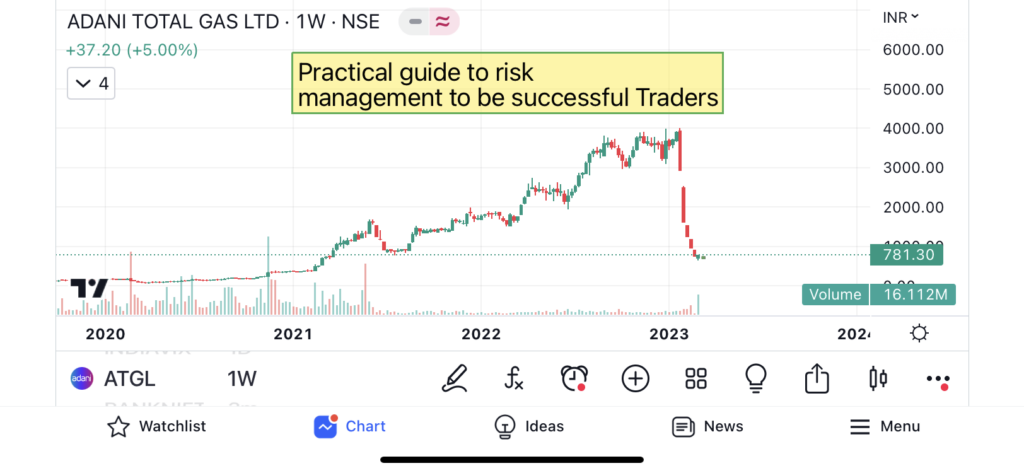
Risk management is an essential component of successful trading, and it involves identifying and mitigating potential risks to protect capital and maximize profits. Here is a practical guide to risk management for traders:
- Set Risk Tolerance: Before you begin trading, determine your risk tolerance level. This will help you decide how much capital to risk on each trade, and it will help you avoid making emotional decisions.
- Use Stop-Loss Orders: A stop-loss order is an order placed with a broker to sell a security when it reaches a specific price. This helps limit potential losses by automatically closing out a position when it reaches a certain point.
- Diversify Your Portfolio: Diversification is the practice of spreading your capital across multiple assets or markets. This helps reduce risk by ensuring that losses in one area of your portfolio are offset by gains in another.
- Monitor Your Positions: Keep a close eye on your positions and monitor them regularly. This will help you identify potential risks and adjust your trades accordingly.
- Use Position Sizing: Position sizing is the process of determining how much capital to risk on each trade. This involves taking into account factors such as the size of your account, the potential risks, and the market conditions.
- Avoid Overtrading: Overtrading can lead to significant losses and increased transaction costs. Stick to your trading plan and avoid making impulsive trades.
- Stay Informed: Keep up to date with the latest market news and developments. This will help you identify potential risks and opportunities in the markets.
- Practice Patience: Avoid making emotional decisions and be patient when it comes to trading. Wait for the right opportunities and avoid chasing after trades that don’t fit your strategy.
In summary, risk management is an essential component of successful trading. By setting risk tolerance levels, using stop-loss orders, diversifying portfolios, monitoring positions, using position sizing, avoiding overtrading, staying informed, and practicing patience, traders can minimize potential risks and maximize their chances of success.
1 thought on “Practical guide to risk management to be successful Traders”